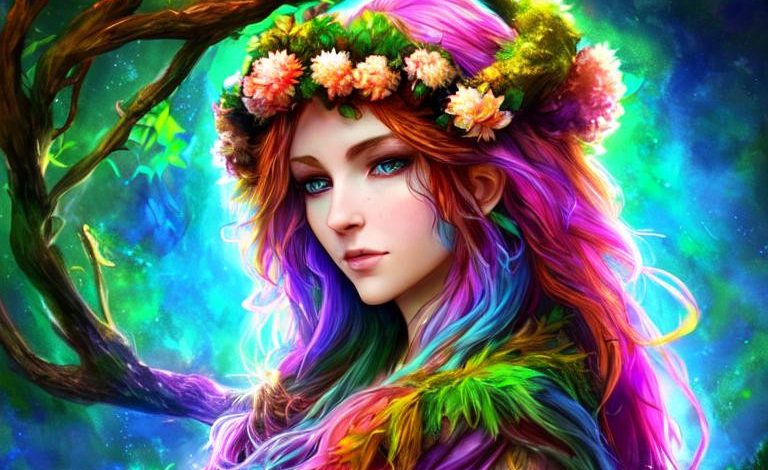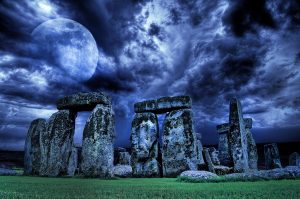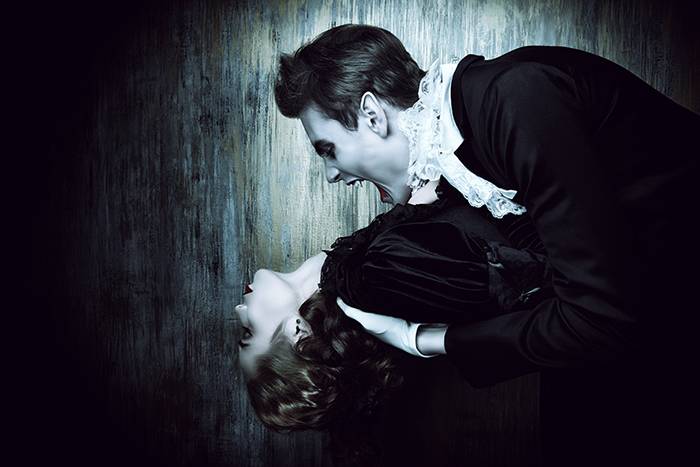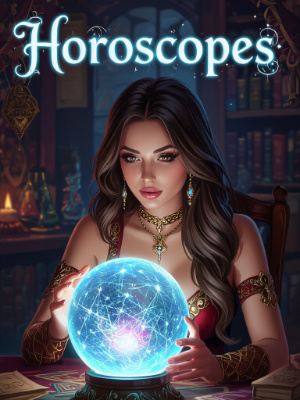
In ancient times a Druid was a philosopher, teacher, counsellor and magician, concerned with the natural world and its powers. Trees to the Druids were considered sacred, especially the oak. The origin of the word ‘Druid’’ comes from ‘doire’, an Irish-Gaelic word for oak tree, this also means wisdom.
The Druids were a priestly caste existing among the Celtic people. The Celts were a tribal people living in Gaul, Britain, Ireland, and other parts of Europe, Asia Minor, and the Balkans. The Celtic people adopted Druidism as their religion, within this religion there were priests and priestesses. Remnants of Druidism still presently exist. Druidism was passed on orally, there are no written records.
Druidism dates back to thousands of years before Christ, it is a shamanic religion, embracing both the spirit world and holistic medicine. Trees, plants and flowers were very important to the  Druids. The Druids are peaceful people, with a love of nature, they practice magic and take on apprentices to whom they pass their valuable knowledge. Within their colleges they taught magic, philosophy, astronomy, astrology, geometry, music, science, and mathematics.
Druids. The Druids are peaceful people, with a love of nature, they practice magic and take on apprentices to whom they pass their valuable knowledge. Within their colleges they taught magic, philosophy, astronomy, astrology, geometry, music, science, and mathematics.
Their places of worship, Temples, were always in secluded areas, they sometimes built stone circles, one of the most famous stone circles is Stonehenge in Britain, although it is not known whether the Druids built this. Stonehenge dates back to 2400 B.C.
There was a hierarchy within Druidism, certain colour robes were worn, this depicted which class the Druid belonged to. The wisest, or eldest Druid always wore gold robes, this was the Arch-druid, the ordinary Druids wore white and were priests. The blue Bards were known as the artistic ones, the newest Druids, wearing brown or black, were given the lesser tasks, they were not held in high esteem. Druidism was a very ordered religion that followed nature’s cycles and offered a spiritual path.
The use of healing herbs, flowers, plants and trees, were essential to the Druids. They mixed their lotions and potions reverently, they were philosophical, wise, and were exceptional practitioners of magic. They were mysterious and had supernatural powers, known for their ability to commune with the dead, to fly, to control the elements, to travel invisibly, they were also time walkers, having the ability to travel into the past or the future. They were skilled in the interpretation of dreams, dreams and the messages within were very important to the Druids. They were avid readers of omens, they also had ritual sacrifices, their traditional wisdom was concerned with philosophy, theology and natural phenomena.
Fire was very important to the Druids, it was associated with cleansing and as a symbol of divinities. The Druids had a belief in reincarnation, and could read the future by the observation of the flights and calls of birds.
Killing a victim was one of the ways the Druids had of reading omens, they would choose someone, they then plunged a dagger into the chosen one’s stomach, then depending on the flaying of the victim and the spray of blood, messages of future events were gleaned.
Although believing all animal life to be sacred, animals were still hunted for sustenance. The Druids believed that different species of animals offered particular insight, foresight, wisdom and knowledge. The Druids were said to contact and commune with the spirits of animals, the Druids had the ability to leave their body and travel through the spirit realm.
The Druids worshiped the Moon, the Sun and the stars, they looked to them for signs. The oak tree was especially significant. Hills, lakes, streams and plants were also important, mistletoe and holly were especially important. Their calendar year followed the lunar and solar cycles, their main holidays were imbolc (the first sign of spring), Beltane (the fullness of life after spring), Lughnasadh (celebrating the ripening of first fruits and the deity Lugh, and Samhain (recognising the end of harvest and the thinning of the veil between the world of the dead and the living). Gifts were left for the spirits.
Special gatherings took place in sanctified places, this is where different communities came together and feasted.
The Druids were intellectuals, they took great pride in learning and teaching, they were very powerful and well respected, people who broke the sacred laws were banished. The Druids could come between different armies to prevent warfare, and they did not have to serve in battle or pay taxes. The Druid women were allowed, if they chose, to take part in wars, they also had the right to divorce their husbands if they were unhappy in the relationship.
There was a strong belief in the soul transferring from one body into another, the purpose of the sole being to achieve enlightenment. The Druids had a belief in the worship of multiple deities. The all-powerful Merlin was an enlightened Druidic teacher, he believed knowledge should be acquired for its power, and this in turn would help dissipate ignorance and superstition.
Caesar documented the Druid lifestyle in Gaul, and practices, when he invaded Britain in 55 B.C. He wrote about the Druids having strict laws, with the elite controlling public and private sacrifices. If anyone disobeyed the chief Druid’s decrees, they received the extreme punishment of being banned from sacrifice, and being prevented from attending religious festivals. When a Druid chief died, another was crowned, that is unless there were several of equal merit, they then voted, although sometimes a vote led to outbreaks of violence. Julius Caesar wrote about the Druids having long and intense philosophical discourse about the size of the universe, the Earth, the heavenly bodies and their movements, and the power and attributes of the gods.
Julius Caesar noted that the Druids in Gaul formed a federation that crossed over tribal boundaries, the Druids met yearly, holding great influence over social and political matters. Many wanted to join the Druid order, where they could embark upon the study of astronomy, astrology, the lore of the gods, ancient verse, and philosophy.
Due to attack from Rome, Druidic practice lost much of its political power and eventually succumbed to Christianity, although rituals and oral teachings continued in secret, Druidism was labelled as a pagan religion. There are modern practices of Druidism based on ancient concepts.
The Druids believed in the Otherworld, a realm existing beyond the physical, but no less real. Their belief being that the dead were carried, by the God Belenus to the Otherworld, where their life carried on as it did before death, however when they died in the Otherworld, their immortal soul would reincarnate in whatever form they chose. When the soul has learned enough at this level, they move to the next realm which has its own Otherworld. This continues until the individual reaches the “Source”, from which all things are created, this is the highest realm. The Druids believed the Otherworld could be visited during dreams, while under hypnosis, while in a shamanic trance, or during meditation. The existence of the Otherworld is a Druidic sacred belief.
There is a common thread between alchemy throughout Druidic tradition although the Druids weren’t ever considered alchemists. Plant extracts and compounds, derived from trees and flowers were used by the Druids, they made magical potions elixirs and remedies. Through careful preparation they conjured magic, especially sex magic using these compounds. The Druids passed down their knowledge through oral tradition in Welsh, they were highly secretive and nothing was revealed outside the Druidic circle. Celtic plant magic was used to treat ailments, it was their version of a doctor who prescribes medicine.
Druidic plant lore is based on the power of the cosmos and an understanding of its inhabitants, the traditions are rich and complex. Rituals using plant magic were an everyday occurrence, along with a deep core of spirituality. The Druid collective understood the principles of alchemy and the Chinese traditions of the theory of the five elements, earth, air, fire, water and ether. The Druids believed in the common spirit and soul shared by all of the plant kingdom, they understood the spiritual qualities held within the plants.
In order to make their complex mixtures, the leaves of plants were used, along with berries, nuts, woods, flowers, roots. They also used nettles, trees, seaweed, herbs, grass, mushrooms, along with a mixture of rare and difficult to find plants and flowers. Some elixirs could take months to make, and every mixture was made for a specific use.
Before making their concoctions, the Druids made sure they knew the specific qualities and energies of the plants required, even the parts of the plants used were quite significant. A plants potency could be enhanced or lessened depending on the state of the plants being used. The location, the plants surrounding the one to be used, the health of the plant and its age, were all noted, each plant contains the energy of its species.
Flowers were especially important in Druidic tradition, the curative properties of flowers was significant, they looked at the flowers life cycle and its place in the world. The flowering plant goes through one of three life cycles, this being biennial, perennial or annual, the stages of the flowering plant are: germination, growth, flowering and seed production. The cycle is completed within one year by the annual, flowering only once, they produce their seeds, and then die.
Trees were of the utmost importance to the Druids, they used both the spiritual (magical) and the physical properties of the tree, taking into account the tree’s life cycle and their place in the world. A tree may have a life span of hundreds of years.
To make their magical mixtures, the Druids had a specific workshop which was extremely important to them, their workshop contained a storeroom of all that was significant to them, a place to perform their rituals, and a work space where they made their potent, and magical concoctions. The workshop grew in accordance with the particular Druid’s skill.
The Druids used ethanol, which is found in wines and spirits, this they achieved through the fermentation of naturally present sugars.
Their tools and equipment were most important to them and were meticulously maintained, two important tools were their dagger and rope.
One flower used in the Druids mix was “lady’s shoes and stockings,” (Lotus corniculatus). One of the most revered trees was the oak, this tree survives for thousands of years, also of significance were the yew and the ash. There are more than four hundred species of oak, and the oak can take up to sixty years to reach reproductive maturity. The Druids believed the oak to be the most significant and magical tree.
The Druid’s used their mixtures for sexual potency, for the energy generated through orgasm and for the type of energy that the individual channeled in the practice of sex magic rituals. The Druid’s had the capacity to enhance sexual energy within everyday relationships. The Druid’s believed that the sexual relationship between two people was of the utmost importance. For this ritual an important aspect was to amplify the climax, the ritual focuses the orgasm.
Before any ritual the Druids would prepare, by cleansing the body, cleansing the internal energy and preparing the mind. The first step, cleansing the body, is carried out in the home, the second step, cleansing the internal energy, can be carried out in the home or the workshop, the third cleanse, preparing the mind, is carried out minutes before the ritual begins. The body is first physically cleansed, time is taken to this end. Time must also be dedicated to the internal energy cleanse, last but not lease there is the mind cleanse, this is all done while maintaining a stoic silence. Moon energised water is used for the physical cleanse. The Druidic priest or priestess would draw water from a natural spring and place it in a container, the container would be left out at night to absorb the energies of the moon.
A protective Circle is drawn, or cast, for the ritual to be conducted within, this is the responsibility of the priest or priestess, this way the individual is protected from any untoward or negative energies. The Circle also focusses the energy, only those within the circle are included in the ritual, those on the outside observe. When casting the Circle the four basic elements are called upon earth, air, fire and water.
The Pair ritual was practiced often, during this ritual enormous amounts of energy would be created, pairs were regular participants, the couples partaking in this ritual usually had a strong bond and were totally committed to each other. Group sex magic rituals were more difficult to perform, planning and maintaining the balance was difficult to achieve, depending on the individuals proclivities. On some occasions a priestess appoints herself the Principal Conduit and assembles a small, all male gathering and progresses through the projection cycle. Alternatively, the priest may gather an all-female group. There were also groups of priests with males, or a priestess with females, depending on their particular leanings.
The Druids were mystical and powerful beings who drew on the powers of the Universe and the natural elements.
Modern day Druids also revere Nature, feeling a deep connection with the Universe and with Creator and Creation. There are Druids organisations all over the world each embracing aspects of ancient Druidism, they perform rituals and bow to Nature. Some acknowledge holy days, these being quarter days (solstices and equinoxes), the solar festivals are approximately half way between the quarter days, these being beltienne, samhainn, imbolg and lughnasadh. These festival are celebrated outdoor in a chosen sacred space.
Druidcraft is a mix of Wicca and Druidism, this can encompass polytheistic (the worship and belief of multiple deities). Monotheistic, (the belief in a single all powerful god). Duotheistic (believing in the existence of two deities). Pantheistic (believing all reality is identical with divinity, everything composes and all-encompassing god). Animistic (the view that plants, animals and inanimate objects possess a spiritual essence). It all depends on what particular spiritual journey the individual chooses to take.
Modern day Druids choose what type of ancient philosophy they wish to follow. One of the greatest, and most well-known Druidic teachers was Merlin, with many still following his philosophies. Merlin’s Seven Precepts are:
(1) Labour diligently to acquire knowledge, for it is power.
(2) When in authority, decide reasonably, for thine authority may cease.
(3) Bear with fortitude the ills of life, remembering that no mortal sorrow is perpetual.
(4) Love virtue-for it bringeth peace.
(5) Abhor vice-for it bringeth evil upon all.
(6) Obey those in authority in all just things, that virtue may be exalted.
(7) Cultivate the social virtues, so shalt thou be beloved by all men.




